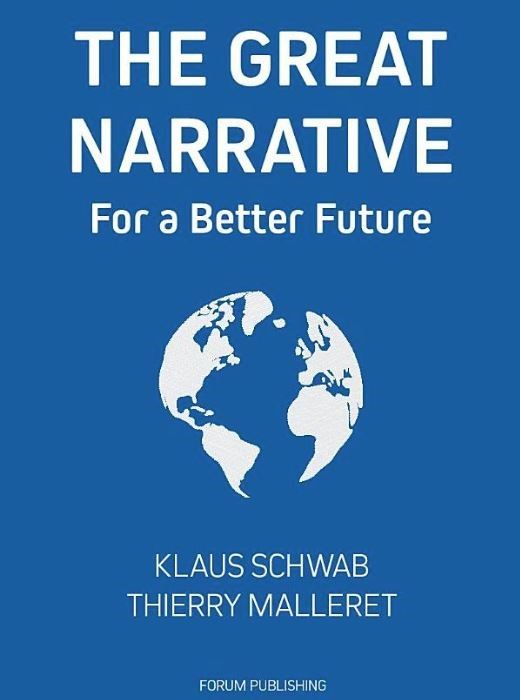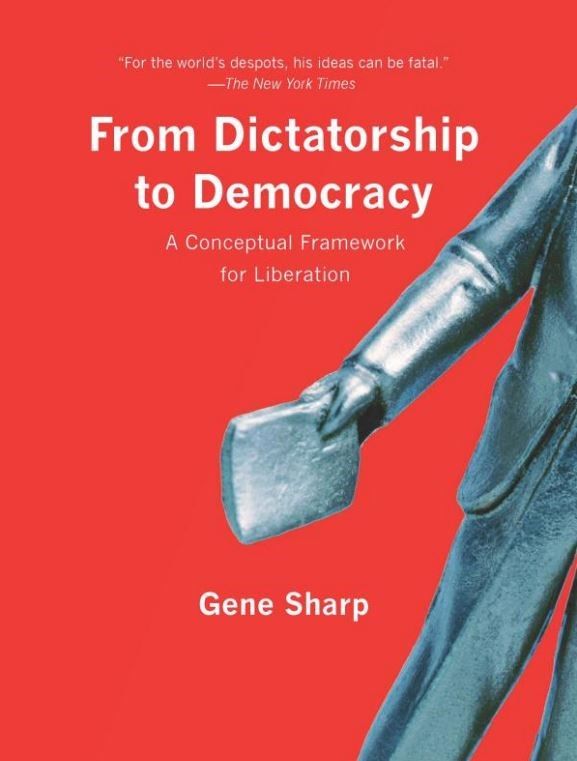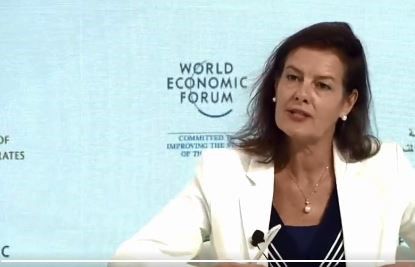The WEF’s newest release “The Great Narrative” with its fixation on ‘fake news’ is as much an admission of guilt as it is recognition of failure.
A funny thing happens when corporate culture becomes indistinguishable from government culture. Corporatized governments promote and grant authority to those ‘ambitious’ individuals who can best over-sell and over-promise results. Think of unimpressive appointees like Trudeau, Ardern, Johnson, and Morrison.
At first glance it doesn’t really matter that these aims are unattainable. But it does matter, because from it we can crystalize this axiom: the more impossible the dream, the more it promotes the likes Ardern, et al.
As each one percent increase in unemployment sustained over a year creates some thirty-six thousand ‘deaths of despair’, a widely known and published fact, the shutting down of economies several years ago was going to cause millions of such deaths as initial unemployment rates in the U.S. alone spiked to nearly 15% according to Pew Research.
Ambitious leaders in league with the IMF/WEF were onboard with this, knowing full well the consequences. It was the pushback from popular ‘populist’ forces that prevented this early on, and in the U.S. a strong case can be made that the White House itself was on the side of these populist forces at the time, as it called for an opening of the U.S. economy and fought openly with governors from blue states.

But the eager-to-please misleaders in service of the IMF, for their part, would never approach any success without an entire cultural substrate. Narratives are a type of soft power, and like all forms of power, narratives can only go so far. We are now witnessing now just how far they can go.
Narratives are just ‘stories in our heads’. But if these are shared with broader communities, real or virtual/digital, then they are reinforced and become part of reality.
The WEF and the IMF it works for have a grand plan for the future – the technocratic aims of which are by now thoroughly understood. The WEF begins with these aims as a foregone conclusion, and so the only questions they wanted answered were ‘Who will carry it out?’, and ‘How will it be done?’
Whether or not it can be done (let alone, ‘should be done’) is not a question they are interested in. It’s a non-starter, because these things simply have to be done.
But this is a positive sign, is it not? The corporate culture of over-selling and over-promising investors and shareholders works in the public’s interest insofar as these catastrophically dystopian aims are far less stable or realizable than advertised.
In other words, the public has been resisting illegal legislation and shattering the narrative which justifies it, and so resetism itself is in danger of failure.
This much has meant the organic development of a counter-narrative, one that resonates with increasing layers in affected societies. Big tech oligarchs have done their part in trying to police, punish, and silence this counter-narrative.
Elites have fallen into a vicious cycle, as the populist counter-narrative is proven in part by that very censorship and repression. The more they push, the weaker they become.
Yet that point is so very well understood by Sorosian Color Revolutionary social engineers, planners, organizers, that one might raise some greater suspicion. It is indeed an axiom of Gene Sharp books like From Democracy to Dictatorship – A Conceptual Framework for Liberation (2012)and one of the most important points to make in popular organizing against ‘regimes’.

Each time the ‘regime’ attempts to make some ‘show of strength’, the counter-narrative prevails as mass publics understand that ‘shows of strength’ are derived from crises of strength and actual weakness.
Freedom, like love, come from places of strength. Dictatorship, like fear, come from a place of losing control. And power is like water, the more you grasp at it, the faster you lose it.
The absolute panic is palpable.
The Majority of People Trust Their Elites Less
One thing the WEF does by positioning itself as some independent watch-dog critic of a rapacious globalist oligarchy, when in fact it is employed by them, is demonstrate that they are ‘tuned in’ to how mass publics think and feel.
This is meant to subvert ‘tired’, ‘dated’, and ‘slow-to-change’ constitutional institutions.
Technocrats mean to show that by simple analysis of internet user data – their hopes, dreams, proclivities, political views and biases – they can arrive at top-down solutions which somehow reflect the user data.
They can then use state-of-emergency laws to enact these solutions into law, or into practice. So much of actual life takes place in the private sphere, that simple collusion and agreement between corporate chiefs on police is already enough to take the place of government and law. Elections are a cumbersome thing of the past, and – they reason – can be done away with.
As a managerial class, here they show the ruling class that because they so very well understand the ‘people’, they are capable of using an entire array of social sciences to achieve the desired result which they have over-promised and over-sold.
At the November 11th 2021 WEF forum in Dubai, “The Great Narrative Meeting”, held in collaboration between the UAE government and World Economic Forum, which aligned with the announcement of the new book by Schwab and Malleret, The Great Narrative, (published December 28th 2021), it was disclosed by panelist Ngaire Woods, Professor of Global Economic Governance at Oxford University, that global elites are now more trusting of each other than ever before, but that the people they rule over – nation by nation respectively – are far less trusting of their own rulers
Woods went on to say that one obstacle to governments’ Covid restrictions and climate measures in the coming years was that “the majority of people trust their elites less.”

Ngaire Woods, Professor of Global Economic Governance at Oxford University
“At Davos a few years ago [surveys] showed us that the good news is the elite across the world trust each other more and more,” … “So we can come together and design and do beautiful things together.
“The bad news is that in every single country they were polling, the majority of people trusted their elite less. So we can lead but if people aren’t following we aren’t going to get to where we want to go.”
The WEF’s new release, The Great Narrative, with its fixation on fake news, is as much an admission of guilt as it is recognition of failure.
The sheer speed, magnitude and scope of the weaponization of Covid-19 to prop up a police-state in Western democracies was a demoralizing psychological operation, an act of political warfare not of nation against nation, but of elites against mass populaces.
This was an information warfare blitzkrieg. But without a decisive vernichtungsschlacht (battle of annihilation), they only left their own line of assault riddled with holes and supply-line issues. Nothing can hide a genuine lack of real preparedness as such displays of confidence. Of course, both their ability to succeed and their operating narrative seemed plausible enough when they launched their attack.
Now, these holes and supply-line issues are termed ‘Fake News’, and this frames the primary focus of The Great Narrative and is the real root of all issues admittedly discussed in the introduction (pg 12-19).
The rest of the thinking world understands instantly what this means: the WEF is calling for further censorship and repression of any alternative narratives.
And yet the hurried pace of the Covid-19 introduced Great Reset, and the way that a sizable portion of the populace has been able to expose it, reject it, and organize with some successes against it, also raises questions.
Was the Great Reset hurried?
What events forced the elites to make this happen now, instead of later?
What conditions would have been riper, and why were those conditions not fostered in advance?
As we have developed this so far in our work on the subject, it indeed appears that the Great Reset was launched with an insufficient foundation for reasons which expose the weakness of the plan. This seems to leave sizable room for the possibility that a notable split within the plutocracy now exists. This can be understood in terms of looking at the future possible outcomes in terms of the balance of class dynamics: billionaires are themselves stratified.
This stratification and conflict among elites is critical to understanding the present balance of forces.
Regardless of political orientation, the predominant error made among citizen-activists pushing back against Resetism is to resort to a default vulgar leftism in their interpretation of the motivations of the elite.
The error here is to project class solidarity onto the owning class. This error is easy to make for a number of reasons, and mostly because indeed the owning class does get behind many if not most of the upwards redistribution schemes which they all benefit from. But these moves tend to conceal or distort the real division which exist among them.
There are signs that their gambit is faltering and those developments were forecasted in our previous work on the subject The Globalist Dilemma: How to Implement a 4th Industrial Revolution Without Losing Power.
Chiefly, their plans were overly publicized, for reasons likely unavoidable given the number of governments, NGOs and organizations required to execute it. Despite their use of euphemisms and the language of human rights and economic development, those parts of the concerned public including lower-order elites, all could see what was really afoot.
In short, the public’s tolerance was misapprehended and through this, the public’s ability to wage a counter-offensive was possibly underestimated. Or conversely – and this also fits the bill –the position of the public to act in the public interest was accurately understood, but the plan had to go forward anyhow.
Either miscalculation would not in and of itself spell demise for the orchestrated Reset agenda.
The rate, volume, and type of upwards capital redistribution is a strong indicator of where the Great Reset agenda stands. But these move in a complex, non-linear fashion. And furthermore, what we can compare the changes to in a concrete sense, are changes over a preceding similar period of time. By that matrix alone, we can say there has been some ‘success’ in the Great Reset scheme.
But comparing this to what was really aimed for, what could have been if executed as it appears they had designed, presents another picture entirely.
A Great Reset in Crisis – A failure to Manufacture Consent
The Non Profit Industrial Complex was not deployed to soft-sell the Great Reset prior to its announcement. Instead, it came all at once, out of nowhere. And for those reasons, it was clumsily attached to their work-to-date (on climate change and poverty reduction).
Suddenly it seemed like a decade or so of propaganda was missing to connect these dots, between climate change, poverty on the one hand, and neuro-implanting and track and tracing the populace, on the other. That’s because there was a decade missing.
A gradual process of building support for the Great Reset, through manufacturing consent, (through building up these ideas through academia and the press, in popular culture and in media), could have been carried out.
The fact that it was not presents us with a contradictory set of postulates. The direct and brutal ‘honesty’ of the reset, in which the medium is the message (“do it because we say!”) makes it easier to combat. At the same time, it raises serious questions as to its timing and its method.
All together then, the release of The Great Narrative is all the more fascinating. This acts much like a sequel to Covid-19: The Great Reset, which itself served the role of narrative instruction. Intended as much for university students as for public relations agencies and politicians, in reading it one discovers all the errors and narrative points which failed to be useful, be related to actual events, and so on.
There is such a discrepancy between the narrative and predicted events in The Great Reset, and what has actually occurred, that we can understand all the better what The Great Narrative had to be written and released so hastily.
It will be an important research task therefore to compare the differences between these two texts.
Ever since the conclusion WWII, western elites have opted for a course of historical development on the foundation of ‘gradual reforms and change’. This, as opposed to the radicalism and rapid changes saw in the first fifty years of the 20th century.
Many of the changes to the geopolitics of the world and Europe envisioned by the architects of the Third Reich are being implemented today by western elites, but these changes are delivered incrementally and slowly over a period of seven decades instead of seven years.
Through this, concerns can be addressed and cohesion in and among elites can be built. The rapid pace of changes seen in the first half of the 20th century raised concerns, and caused divisions between western elites, and provoked a ‘histamine’ reaction from the populations in question.

When populations use social media to openly discuss the holes in the mainstream narrative, their comments and posts are called ‘fake news’. Fact checkers say so, even though a recent lawsuit against Facebook revealed through FBs rejoinder that Zuckerberg considers the views of the fact checkers to be merely opinions. “Facebook Quietly Admits Its Third-Party ‘Fact-Checks’ Are ‘Opinions’”
The need to openly talk about ‘narratives’ and combatting fake news as the WEF does, is itself a sign of the times and a sign of their own weakness. The Resestist narrative is crumbling, and lacking popular support they resort to an unstable repression.



My life has been great since leaving big pharma behind over two decades ago. I have to be responsible for myself of course and can’t just wing it and treat my body like crap and expect great outcomes, but when you take care of your body then it’s amazing how little to zilch one needs the medical community at all. Then again our Creator created a marvelous body for us to occupy until we die so our Creator gets all the praise.